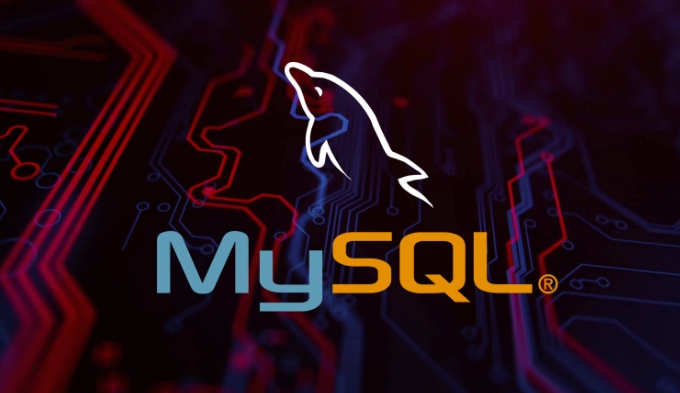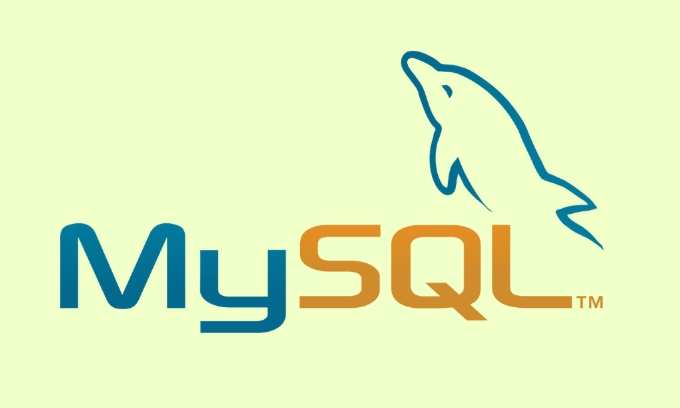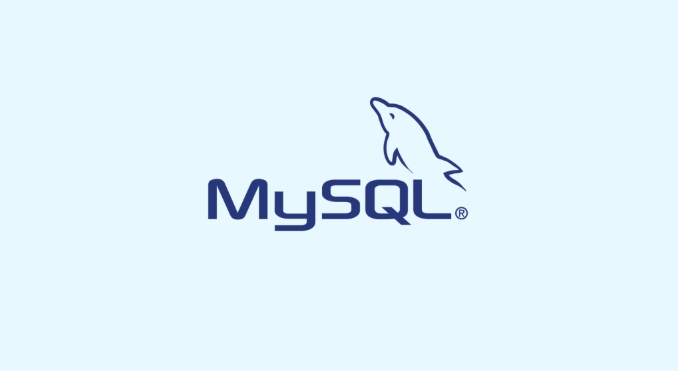MySQL stand-alone bottlenecks can be solved through read and write separation, library separation, cache and asynchronous processing and other optimization methods. 1. Read and write separation is implemented through master-slave replication. The master library processes write requests, and the slave library processes read requests, and combines connection pools to improve efficiency, but attention should be paid to the asynchronous replication delay problem; 2. The sub-base sub-table includes vertical split (split by field) and horizontal split (split by rules), which is suitable for large data scenarios and requires middleware to handle complex queries; 3. Caching can reduce database pressure, use Redis or Memcached to cache hotspot data, and combines message queues to asynchronously process non-real-time write operations; 4. Other optimizations include slow query analysis, parameter tuning, connection pool management and SQL optimization, and detailed processing is crucial to performance improvement.

MySQL is the underlying core of many applications. When business growth and visits increase, stand-alone MySQL will soon become a bottleneck. To support high concurrency and large data volume scenarios, we must make adjustments based on architecture and strategy. The most direct way is not to change the database, but to choose the appropriate expansion method based on the business characteristics.

Read and write separation: alleviate the pressure of query
In most systems, read operations are much more than write operations . At this time, you can use "master-slave copy" to achieve read and write separation. The master library processes write requests, and multiple slave libraries are responsible for reading requests, which can effectively reduce the pressure on a single node.

- The master library synchronizes data changes to the slave library
- The application layer or middleware automatically determines whether it is read or written, and distributes it to different nodes
- Can be used in conjunction pools to improve efficiency
It should be noted that MySQL replication is asynchronous by default and may have delays. If some businesses have high consistency requirements (such as payment), semi-synchronous replication or introduction of cache guarantees must be considered.
Library and table sub-table: breaking through the performance limit of single table
When the data volume of a table reaches tens of millions or even hundreds of millions, the response speed will slow down even if the index is added. At this time, vertical splitting and horizontal splitting need to be considered.

- Vertical split : Split the large table into multiple small tables according to the fields, and pick up the uncommon fields or large fields separately
- Horizontal splitting : Spread the data of a table into multiple physical tables according to rules, such as taking the module by user ID
For example, if the data volume of an order table is too large, it can be distributed to multiple subtables according to the user ID hash. In this way, only one subset is checked for each query, and the performance will be much better.
However, after splitting the table, cross-table query and aggregation statistics become complicated, and they need to be processed by middleware (such as MyCat, ShardingSphere) or the business layer itself.
Cache and asynchronous processing: Reduce direct database pressure
Many times, the reason why the database cannot withstand the pressure is that a large number of repeated requests are hit on it. Adding the cache layer is a very effective way at this time.
- Use Redis or Memcached to cache hotspot data, such as user information, configuration items, etc.
- Write operations can be processed asynchronously using message queues to avoid instantaneous peak writing
For example, the product details page has a lot of visits, and if you check the database every time, the pressure will be great. You can check the cache first, and then return to the source database, and update the cache.
In addition, for some non-real-time write operations, such as logging and integral changes, they can be thrown into the message queue and processed slowly to give the database a breath.
Other optimization methods: Details determine success or failure
In addition to architectural adjustments, daily maintenance and optimization must not be missing:
- Regularly analyze slow query logs, optimize SQL and indexes
- Reasonably set parameters such as connection number and buffer pool size
- Use a connection pool to manage database connections to avoid frequent disconnections
- Archive large tables and migrate historical data to separate storage
Sometimes a small SQL change can bring dozens of times the performance improvement. For example, replace SELECT * with a specified field, avoid full table scanning, reduce the number of JOINs, etc.
These methods can be used in combination according to business needs and may not be all used from the beginning. First solve the most obvious bottleneck, and then gradually upgrade the architecture. Basically all this is not complicated but easy to ignore.
The above is the detailed content of Approaches to Scaling MySQL Database for High Load. For more information, please follow other related articles on the PHP Chinese website!

Hot AI Tools

Undress AI Tool
Undress images for free

Undresser.AI Undress
AI-powered app for creating realistic nude photos

AI Clothes Remover
Online AI tool for removing clothes from photos.

Clothoff.io
AI clothes remover

Video Face Swap
Swap faces in any video effortlessly with our completely free AI face swap tool!

Hot Article

Hot Tools

Notepad++7.3.1
Easy-to-use and free code editor

SublimeText3 Chinese version
Chinese version, very easy to use

Zend Studio 13.0.1
Powerful PHP integrated development environment

Dreamweaver CS6
Visual web development tools

SublimeText3 Mac version
God-level code editing software (SublimeText3)
 How to use PHP to develop a Q&A community platform Detailed explanation of PHP interactive community monetization model
Jul 23, 2025 pm 07:21 PM
How to use PHP to develop a Q&A community platform Detailed explanation of PHP interactive community monetization model
Jul 23, 2025 pm 07:21 PM
1. The first choice for the Laravel MySQL Vue/React combination in the PHP development question and answer community is the first choice for Laravel MySQL Vue/React combination, due to its maturity in the ecosystem and high development efficiency; 2. High performance requires dependence on cache (Redis), database optimization, CDN and asynchronous queues; 3. Security must be done with input filtering, CSRF protection, HTTPS, password encryption and permission control; 4. Money optional advertising, member subscription, rewards, commissions, knowledge payment and other models, the core is to match community tone and user needs.
 Automating MySQL Deployments with Infrastructure as Code
Jul 20, 2025 am 01:49 AM
Automating MySQL Deployments with Infrastructure as Code
Jul 20, 2025 am 01:49 AM
To achieve MySQL deployment automation, the key is to use Terraform to define resources, Ansible management configuration, Git for version control, and strengthen security and permission management. 1. Use Terraform to define MySQL instances, such as the version, type, access control and other resource attributes of AWSRDS; 2. Use AnsiblePlaybook to realize detailed configurations such as database user creation, permission settings, etc.; 3. All configuration files are included in Git management, support change tracking and collaborative development; 4. Avoid hard-coded sensitive information, use Vault or AnsibleVault to manage passwords, and set access control and minimum permission principles.
 How to set environment variables in PHP environment Description of adding PHP running environment variables
Jul 25, 2025 pm 08:33 PM
How to set environment variables in PHP environment Description of adding PHP running environment variables
Jul 25, 2025 pm 08:33 PM
There are three main ways to set environment variables in PHP: 1. Global configuration through php.ini; 2. Passed through a web server (such as SetEnv of Apache or fastcgi_param of Nginx); 3. Use putenv() function in PHP scripts. Among them, php.ini is suitable for global and infrequently changing configurations, web server configuration is suitable for scenarios that need to be isolated, and putenv() is suitable for temporary variables. Persistence policies include configuration files (such as php.ini or web server configuration), .env files are loaded with dotenv library, and dynamic injection of variables in CI/CD processes. Security management sensitive information should be avoided hard-coded, and it is recommended to use.en
 How to use PHP to develop product recommendation module PHP recommendation algorithm and user behavior analysis
Jul 23, 2025 pm 07:00 PM
How to use PHP to develop product recommendation module PHP recommendation algorithm and user behavior analysis
Jul 23, 2025 pm 07:00 PM
To collect user behavior data, you need to record browsing, search, purchase and other information into the database through PHP, and clean and analyze it to explore interest preferences; 2. The selection of recommendation algorithms should be determined based on data characteristics: based on content, collaborative filtering, rules or mixed recommendations; 3. Collaborative filtering can be implemented in PHP to calculate user cosine similarity, select K nearest neighbors, weighted prediction scores and recommend high-scoring products; 4. Performance evaluation uses accuracy, recall, F1 value and CTR, conversion rate and verify the effect through A/B tests; 5. Cold start problems can be alleviated through product attributes, user registration information, popular recommendations and expert evaluations; 6. Performance optimization methods include cached recommendation results, asynchronous processing, distributed computing and SQL query optimization, thereby improving recommendation efficiency and user experience.
 Securing MySQL Connections with SSL/TLS Encryption
Jul 21, 2025 am 02:08 AM
Securing MySQL Connections with SSL/TLS Encryption
Jul 21, 2025 am 02:08 AM
Why do I need SSL/TLS encryption MySQL connection? Because unencrypted connections may cause sensitive data to be intercepted, enabling SSL/TLS can prevent man-in-the-middle attacks and meet compliance requirements; 2. How to configure SSL/TLS for MySQL? You need to generate a certificate and a private key, modify the configuration file to specify the ssl-ca, ssl-cert and ssl-key paths and restart the service; 3. How to force SSL when the client connects? Implemented by specifying REQUIRESSL or REQUIREX509 when creating a user; 4. Details that are easily overlooked in SSL configuration include certificate path permissions, certificate expiration issues, and client configuration requirements.
 How to develop AI intelligent form system with PHP PHP intelligent form design and analysis
Jul 25, 2025 pm 05:54 PM
How to develop AI intelligent form system with PHP PHP intelligent form design and analysis
Jul 25, 2025 pm 05:54 PM
When choosing a suitable PHP framework, you need to consider comprehensively according to project needs: Laravel is suitable for rapid development and provides EloquentORM and Blade template engines, which are convenient for database operation and dynamic form rendering; Symfony is more flexible and suitable for complex systems; CodeIgniter is lightweight and suitable for simple applications with high performance requirements. 2. To ensure the accuracy of AI models, we need to start with high-quality data training, reasonable selection of evaluation indicators (such as accuracy, recall, F1 value), regular performance evaluation and model tuning, and ensure code quality through unit testing and integration testing, while continuously monitoring the input data to prevent data drift. 3. Many measures are required to protect user privacy: encrypt and store sensitive data (such as AES
 How to build an online customer service robot with PHP. PHP intelligent customer service implementation technology
Jul 25, 2025 pm 06:57 PM
How to build an online customer service robot with PHP. PHP intelligent customer service implementation technology
Jul 25, 2025 pm 06:57 PM
PHP plays the role of connector and brain center in intelligent customer service, responsible for connecting front-end input, database storage and external AI services; 2. When implementing it, it is necessary to build a multi-layer architecture: the front-end receives user messages, the PHP back-end preprocesses and routes requests, first matches the local knowledge base, and misses, call external AI services such as OpenAI or Dialogflow to obtain intelligent reply; 3. Session management is written to MySQL and other databases by PHP to ensure context continuity; 4. Integrated AI services need to use Guzzle to send HTTP requests, safely store APIKeys, and do a good job of error handling and response analysis; 5. Database design must include sessions, messages, knowledge bases, and user tables, reasonably build indexes, ensure security and performance, and support robot memory
 How to make PHP container support automatic construction? Continuously integrated CI configuration method of PHP environment
Jul 25, 2025 pm 08:54 PM
How to make PHP container support automatic construction? Continuously integrated CI configuration method of PHP environment
Jul 25, 2025 pm 08:54 PM
To enable PHP containers to support automatic construction, the core lies in configuring the continuous integration (CI) process. 1. Use Dockerfile to define the PHP environment, including basic image, extension installation, dependency management and permission settings; 2. Configure CI/CD tools such as GitLabCI, and define the build, test and deployment stages through the .gitlab-ci.yml file to achieve automatic construction, testing and deployment; 3. Integrate test frameworks such as PHPUnit to ensure that tests are automatically run after code changes; 4. Use automated deployment strategies such as Kubernetes to define deployment configuration through the deployment.yaml file; 5. Optimize Dockerfile and adopt multi-stage construction






